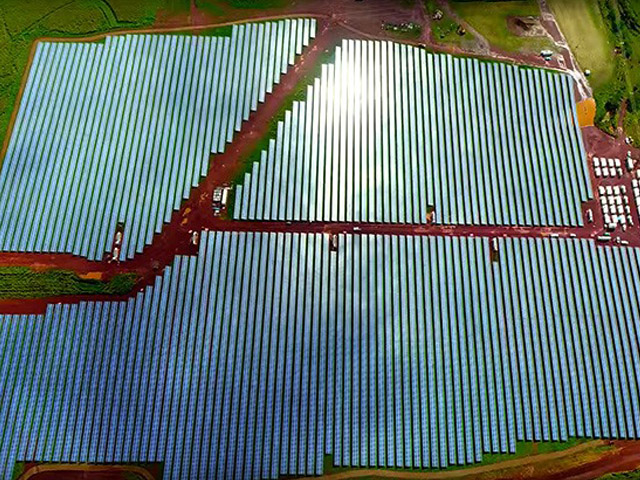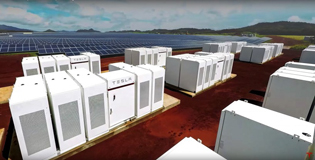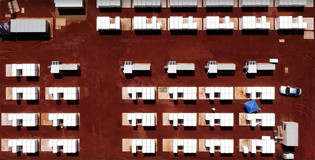WORLD’S BIGGEST SOLAR STORAGE FACILITY
29 Mar 2017
Tesla has officially opened the world’s largest solar storage facility on the island of Kauai, Hawaii. With this renewable energy projects success, the island is hoping to be fossil fuel free by 2045.

The islands of Hawaii have always had an interesting relationship with modern energy consumption, as an area they are unique in that there is no petroleum, natural gas or coal is produced on the islands. The islands must then have all fossil fuel supply shipped onto the islands and stored.




The islands and those that call them home are potentially vulnerable to power outage should shipments of fossil fuel be interrupted by natural or geopolitical disasters. For this reason, Kauai is pushing to run on 70 percent renewable energy by 2030 and to hit the 100 percent target come 2045.
In a bid to achieve these targets, the island of Kauai has turned to solar energy to ensure the needs of their urban centres are met and are not subject to power outages. It is incredibly exciting then that Tesla has officially opened its 13 MW solar farm on the island. The farm’s 54, 978 solar panels in tandem with its 52 MWh battery installation will help the island reduce fossil fuel consumption by about 1.6 million gallons of diesel and petroleum per year.
Now the farm is open, the island of Kauai will run on roughly 44 percent renewable energy, a huge improvement from their 92 percent dependence on fossil fuel in 2011. The new energy project has been developed by Tesla for the Kauai island utility cooperative and is the biggest solar storage facility in the world according to KIUC president and CEO David Bissell.
The large-scale project is a way of harnessing the abundance of solar power found on the Hawaiian island and delivering it to a grid during the evening hours to reduce the amount of fossil fuels needed to meet energy demands after sunset.
The battery is made up of 272 Tesla powerpacks, which store the abundant solar energy produced during the day for use once after sunset. The powerpacks installed on Kauai are second-generation models and contain the new 2170 cell developed by Tesla and Panasonic.
Tesla’s project marks the first time a solar facility has been able to successfully and reliably deliver power 24 hours a day, meaning a big step towards countries being able to run on 100 percent renewable energy.
Tesla is hoping that their work in Kauai will act as a demonstration of what their technologies can do for other commercial energy providers around the world, and on a small-scale basis for residential usage.

MORE NEWS

OZBREED'S GROUND HUG™ HAS WON SPECIALIST PLANT OF THE YEAR 2025!

WOODLEA UNVEILS NEW SKATEPARK

SUMMER 2024 EDITION OF PLA JOURNAL OUT NOW!

TWELVE APOSTLES PRECINCT REDEVELOPMENT MOVES FORWARD

HEALTH AND WELLBEING PRECINCT COMING TO MANLY

